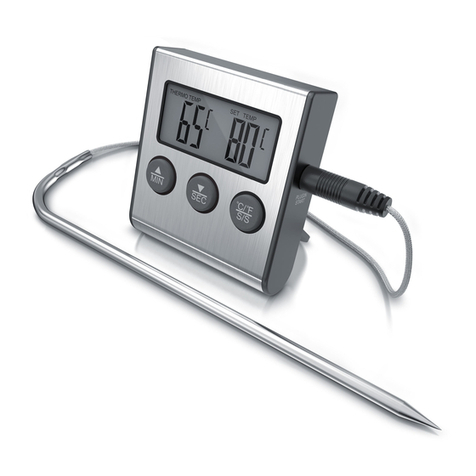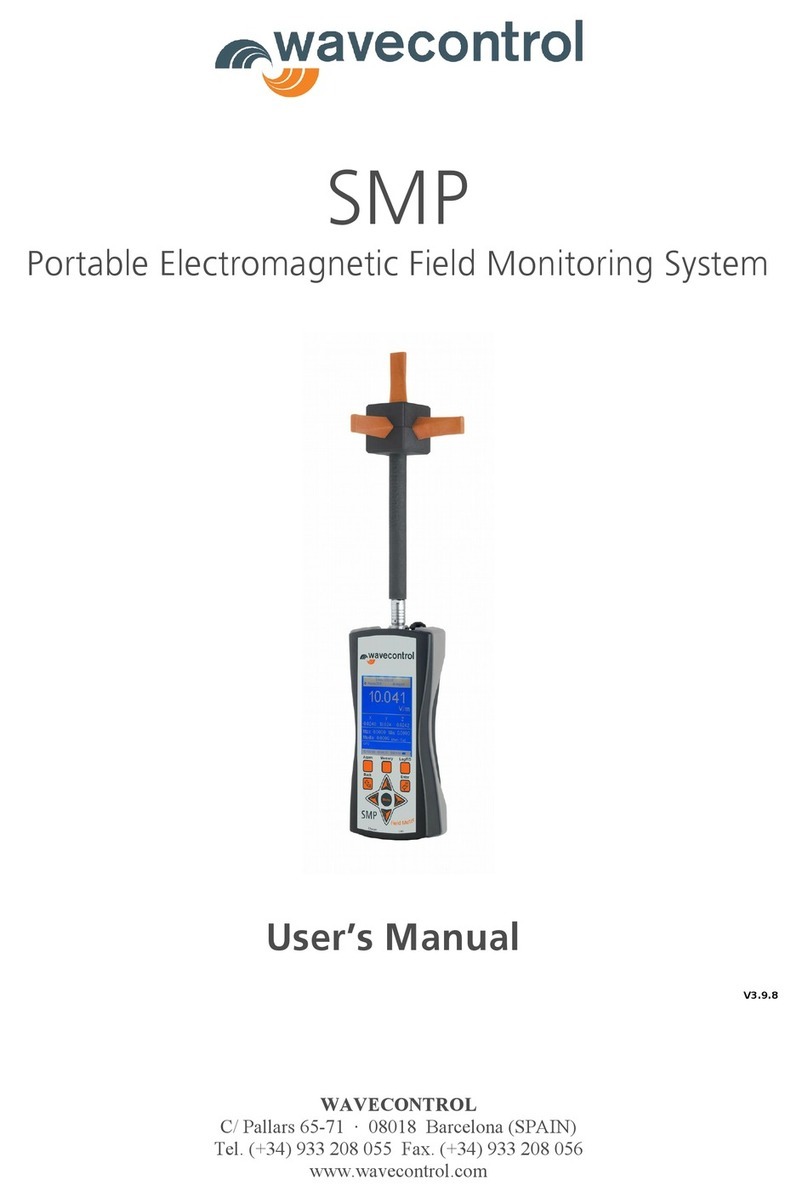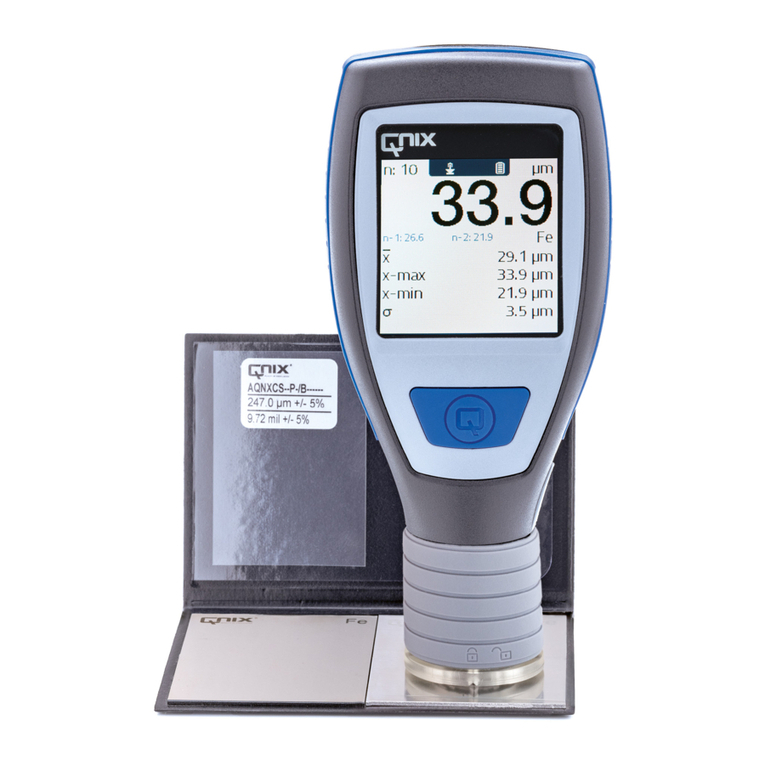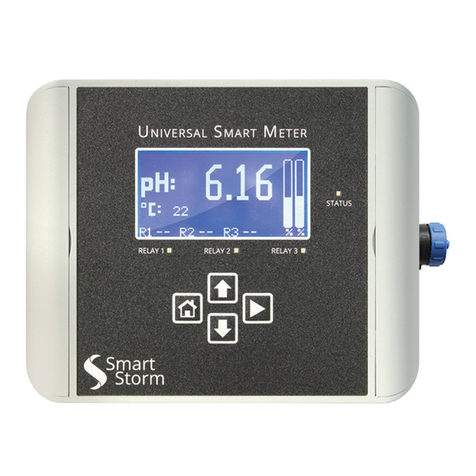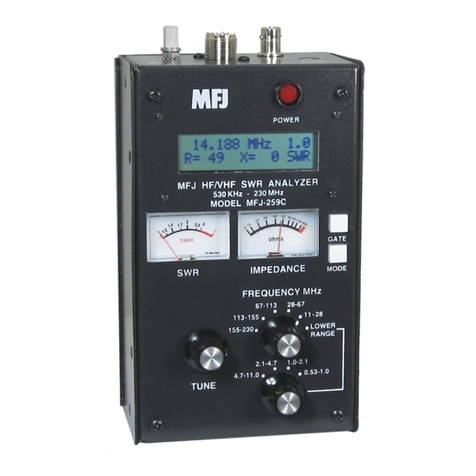Liqua-Tech LPM-102 Troubleshooting guide

LPM-102
LP-Gas Flowmeter
Operation & Maintenance
INTRODUCTION
The Model LPM-102 LP-gas flowmeter is a compact meter consist-
ing of all necessary components required for accurate measure-
ment of liquid propane.
Product entering the flowmeter passes through a strainer assem-
bly, provided to trap particles that could cause premature
innacuracies in registration.
The LPM102 incorporates a sleeve-type vapor elimination valve
that permits a “leak” flow of approximately .02 gpm (75.7 cc)
back to the supply tank. This valve operates in conjunction with
Liqua-Tech’s innovative soft seat pressure differential valve. The
valve’s piston moves away from its seat when at least 15 psi
(1.034 bar) above product vapor pressure is maintained at the
measuring chamber outlet. This ensures that only liquid is mea-
sured by the meter.
LPM-102 utilizes the proven oscillating piston design. This precise
method of metering has been proven to be both accurate and de-
pendable in thousands of installations. The rotational movement
of the oscillating piston chamber is transferred through a gear
train assembly, which in turn can operate various types of regis-
tration devices.
INSTALLATION
1. Plan the installation for maximum rate of delivery, sizing the
supply tank outlet, piping and valve for free gravity flow to the
pump suction. To accomplish this, locate the pump as close as
possible to the supply tank and use short inlet connections with
few restrictions. Keep the number of elbows to a minimum, and
use large radius elbows, wherever possible. To further reduce the
likelihood of causing vapor in the pump suction line, a pump by-
pass valve should be installed in a return line to the supply tank.
2. Locate the flowmeter at any convenient place in the pump dis-
charge line. If the flowmeter is to be operated under extremes of
environment (dirt, water, physical damage, etc.), an enclosure or
other protection should be provided. Allow 6” (15.24 cm) vertical
clearance for removal of the register and vapor release mecha-
nism . The clearance for removing the differential valve (front on
right-hand assembly) is 3½" (8.89 cm). Do not install any bypass
around the flowmeter; the valve in such a line might eventually
leak, work open, or be left open causing improper measurement.
When Installing
Secure the connecting piping to prevent strain on the flowmeter
casing. Use pipe compound sparingly or suitable pipe tapes on
male threads only. Provide the installation with means for pres-
sure relief as outlined in the National Fire Protection Association
Pamphlet 58 or local codes and practices.
NOTE: All isloated sections of the system MUST be equipped
with a hyrdostatic relief device to prevent damage. Failure
perform this precaution could result in serious injury or
death from explosion/fire.
Vent Line
The vent line from the flowmeter’s vapor vent to the vapor space
of the supply tank should be 3/8" (10 mm) minimum inside diam-
eter tube or pipe. A shut-off valve must be installed in the vapor
vent line to permit emptying of the meter for cleaning or when ser-
vice is performed on the flowmeter. The vapor release vent line
must be returned to the supply tank and should not be made a
common connection with other vapor return lines or pump bypass
lines. When properly installed, this line must permit free flow in ei-
ther direction. If valve in vent line is closed, flowmeter will not
function. These instructions must be followed in order to maintain
proper function of the differential valve.
NOTE: A vapor return line should not be used from supply
tank to tank being filled, inasmuch as such connection would
cause confusion as to the amount delivered as a result of pos-
sible passage of vapor in either direction.
OPERATION
Pressurize the system slowly by allowing vapor to flow through the
vent line. Then pass sufficient liquid through the system to clear
the lines of air and vapor.
After starting the pump, slowly open outlet valve downstream of
the flowmeter. Check the rate of flow after the system is filled; it
should not exceed maximum indicated rate of flow18 gpm (68
lpm).
Adjust the external pump bypass to deliver the maximum practical
rate of flow for the least amount of pump pressure (see pump
manufacturer’s instructions).
Maximum working pressure on the system must not exceed 350
psi (24.13 bar). Avoid the use of small diameter hose and exces-
TABLE OF CONTENTS
Introduction1
Installation1
Before Installing the Flowmeter1
When Installing1
Vent Line1
Operation1
Maintenance2
General Maintenance2
Erratic Registration2
Consistent Over or Under Registration2
Calibration On Uncompensated Flowmeters2
Calibration On Compensated Flowmeters2
Measuring Chamber Maintenance2
To Remove and Disassemble2
To Clean the Measuring Chamber3
To Reassemble the Chamber in the
Flowmeter3
Gear Train Maintenance
To Replace Gear Train3
Vapor Release Maintenance3
To Disassemble3
Strainer Maintenance3
To Inspect the Strainer3
Differential Valve Maintenance4
Trouble Shooting4
1Rev. 3/02

sive pressures to achieve the desired flow rates; these may result
in leakage and undue wear on the pump.
Although all flowmeters are carefully calibrated and tested after
assembly and no changes should be necessary; field calibration is
recommended after installation is complete.
While the installation is still new, clean the strainer frequently. Af-
ter the system has been in service, only periodic cleaning is neces-
sary.
MAINTENANCE
General Maintenance
For sustained accuracy of flowmeters, little maintenance is re-
quired other than to see that the proper conditions of operation
are preserved. Once the flowmeter has been installed correctly,
these conditions consist merely in guarding against foreign mat-
ter, such as vapor, sediment or water entering the measuring
chamber. However, should any malfunction develop, do not dis-
mantle the flowmeter until the cause of the trouble has first been
determined. (Refer to TROUBLESHOOTING .)
Sediment- The liquid passing through the measuring chamber
must be free of grit and other forms of sediment to prevent unnec-
essary friction and to eliminate scoring of the piston and chamber
walls. Evidence of trouble from this source will be found in un-
der-registration of the flowmeter. Periodic cleaning and inspection
of the flowmeter strainer will help to insure against this form of
trouble.
Vapor - Being an instrument that measures by volume, a
flowmeter will record the passage of vapor as well as the liquid
being measured. Over-registration will result. Where this condi-
tion exists, check for adequacy of the vapor elimination system.
Water - Incidental water will cause no damage to the flowmeter.
Trouble from this source may be expected when water is allowed
to remain in the flowmeter.
Erratic Registration
Erratic registration is usually caused by vaporization of the prod-
uct, faulty differential valve or vapor release valve
(over-registration), or by dirt or pipe scale in the measuring cham-
ber (under-registration). Clean the flowmeter if necessary, as di-
rected in MAINTENANCE. If flowmeter continues to creep when
outlet valve is closed, check differential valve seals. (Refer to
TROUBLESHOOTING.)
Consistent Over- or Under- Registration
When the flowmeter consistently registers either more or less than
is delivered and no other cause in system function can be deter-
mined, calibration of the metering system is recommended.
CALIBRATION ON UNCOMPENSATED
FLOWMETERS
Test the flowmeter using a volumetric prover large enough to per-
mit the flowmeter to operate for at least one minute at normal
flow rate. Slip tube and rotary gauge reading are not sufficiently
accurate for proving flowmeters. A detailed description of an
LP-Gas test procedure may be found in the National Bureau of
Standards Handbook 99, “Testing Liquefied Petroleum Gas Liq-
uid-Measuring Devices”.
A thermometer well is provided for taking temperature readings
while calibrating. It is covered by a snap plug to keep dirt from en-
tering the well.
When temperature readings are to be obtained, the well must be
filled with permanent type antifreeze, or with a light oil.
If a gravimetric test method is used, the conversion to gallons
must be on the basis of: (1) specific gravity determined at the time
of the test (not an assumed value), and (2) the temperature of the
product as it is passed through the flowmeter. The volumetric test
method, however, is considered to yield more accurate results and
is preferred. After performing the test procedure:
1. Determine the percentage of over-or under-delivery for each
test conducted.
2. Remove the register screws and take off the register.
3. Note the numbers stamped on the register change gear (on
register spindle marked “R” on the adapter plate) and on the stuff-
ing box change gear (or flowmeter spindle marked “S” on the
adapter plate). Locate the gear tooth combination on the Change
Gear Chart.
4. Add the step-wise increments of change in registration until the
desired amount is reached. If the flowmeter is under-registering
(delivering too much), select a new pair of gears farther down the
chart. If the flowmeter is over-registering (delivering too little), se-
lect a new pair of gears farther up the chart.
5. Remove the old change gears and replace them with the new
pair. Always place the change gear with the smaller number of
teeth on the “R” shaft and the gear with the greater number of
teeth on the “S” shaft as indicated on the adapter plate. To remove
change gears, close the split end of the spindle slightly with a pair
of pliers to permit removal of the change gear. After slipping on
the new gear, spread the ends of the spindle slightly.
6. Reinstall the register, run several gallons (liters) through the
flowmeter, and retest.
CALIBRATION ON COMPENSATED FLOWMETERS
1. Remove the two seal screws and cover from the temperature
compensator.
2. Move the anchor pin from “Compensated Anchor” to “Uncom-
pensated Anchor”. (Flowmeter reading will now be uncompen-
sated.)
3. Perform the same LP-Gas flowmeter test procedure as outlined
for uncompensated flowmeters.
4. If necessary to change flowmeter calibration, refer to
CALIBRATION ON UNCOMPENSATED FLOWMETERS, steps 1 to
6.
5. Move anchor pin to “Compensated Anchor”, and operate
flowmeter for at least 50 gallons (189 liters) before proceeding
with calibration tests. (Flowmeter readings will now be tempera-
ture compensated.)
6. Perform same flowmeter test procedure used for uncompen-
sated flowmeter. Temperature reading must be taken at the prover
only. (Temperature at flowmeter is assumed to be 60ºF.)
7. If necessary to adjust compensated registration, turn calibra-
tion dial located on the right side of the Lever Arm (to turn adjust-
ment, use wrench on hex hub of dial). Turn clockwise “To Give
More” or counterclockwise to “To Give Less”. Each dial gradua-
tion will change compensated delivery approximately 0.15%.
MEASURING CHAMBER MAINTENANCE
CAUTION: Be sure meter is completely relieved of pressure
before performing any internal maintenance. Pressure must
be 0 psig. Failure to properly depressureize and evacuate the
system could result in serious injury or death from explo-
sion/fire.
Perform the following outdoors, away from buildings and
sources of ignition. Before opening any part of the flowmeter,
close all valves between supply tank and flowmeter. Replace-
ment gaskets should be on hand.
To Remove and Disassemble
This operation is not difficult and may be performed by any com-
petent mechanic. No special tools are required. No trouble need
be expected, if these few simple but important directions are fol-
lowed. Do not open the flowmeter until you have checked over all
other possible causes of erratic registration. (Refer to TROUBLE
SHOOTING.)
1. Prepare a clean surface on which to place the parts as they are
removed. (The parts are machined to close tolerances and should
be handled with care.) Also check that a replacement gasket is on
hand before opening the flowmeter, it may need to be replaced.
2. Remove the flowmeter top taking care not to damage the gas-
ket, it is to be reused.
3. Lift the measuring chamber from the flowmeter casing.
4. Remove the top plate by inserting a screwdriver in one of the
2Rev. 3/02

slots provided, and prying it off. Be careful not to scratch or nick
any part of the chamber.
5. Lift out the piston by its spindle. If care is taken to draw it
straight, it should come out easily. Do not force it.
6. Remove the control roller from the lower cylinder head. If the
diaphragm or seal pin requires replacement, they may be re-
moved by pulling upward, using pliers if necessary.
To Clean the Measuring Chamber
The parts may be most easily cleaned of scale, embedded chips,
heavy corrosion and other foreign matter, using gasoline and a
stiff-bristle (not wire) brush. Do not use abrasives, such as emery
cloth or sandpaper. When the piston is badly corroded, replace
the whole chamber.
The sliding surfaces between the chamber and piston take on a
burnished finish and wear little if any. The parts of the measuring
chamber which may show wear after long periods of service are
the diaphragm and the control roller. These parts will not require
replacement until the accuracy of the flowmeter begins to fall at
low rates of flow. To change these parts, merely substitute new
parts for the old, when the flowmeter is disassembled for clean-
ing.
To Reassemble the Chamber in the Flowmeter
Before assembling the flowmeter, make sure all parts are clean. If
possible, flush out the flowmeter body. Assemble the parts care-
fully; they should slide together easily without hammering or forc-
ing. It is essential that all contact surfaces between the upper and
lower cylinder heads and the cylinder, or between the measuring
chamber and its seat in the casing, be free from nicks.
1. Assemble the diaphragm and seal pin in the chamber, if re-
placement of these parts was necessary.
2. Place the control roller on its pin, and see that it will rotate
freely.
3. Reinstall the piston, and oscillate it carefully by hand; it should
move easily without binding. If it sticks, do not force it, but remove
it and locate the cause. Do not file down the roller as this will de-
stroy the accuracy of the flowmeter.
4. Reinstall the top plate, and again oscillate the piston to make
sure that it is free.
5. Before installing the measuring chamber in the casing, make
sure that the seat is clean and free of nicks. Install the chamber,
making sure that the dowel pin in the main casing enters the slot
in the bottom housing properly and allows the chamber to rest
squarely on the seat, The top of the chamber should be flush with
the gasket seal.
GEAR TRAIN MAINTENANCE
CAUTION: Be sure meter is completely relieved of pressure
before performing any internal maintenance. Pressure must
be 0 psig. Failure to properly depressureize and evacuate the
system could result in serious injury or death from explo-
sion/fire.
Perform the following outdoors, away from buildings and
sources of ignition. Before opening any part of the flowmeter,
close all valves between supply tank and flowmeter. Replace-
ment gaskets and seals should be on hand.
To Replace Gear Train Shaft Seal
1. Remove the register, gear plate and adapter tower.
2. Remove the star driver.
3. Remove the stuffing box nut.
4. Remove shaft seal. Inspect top of spindle to be sure it is free of
nicks or burrs which might damage the new shaft seal when it is
placed on spindle.
5. Replace shaft seal with new part. Be sure expander and spring
are in position before inserting new seal.
6. Assemble nut and tighten down all the way.
To Replace Gear Train
1. Remove the register, gear plate and adapter tower.
2. Remove the star driver.
3. Remove the flowmeter main case cover, with gear train assem-
bly attached. Be careful to keep dirt out of flowmeter, and avoid
damage to the cover gasket (a replacement gasket may be neces-
sary).
4. Remove the stuffing box nut.
5. Take off the clamp nut and remove the gear train assembly
from the underside of the flowmeter top casing.
6. Install replacement gear train, making sure that the replace-
ment has the same gear reduction, and new gear train is orien-
tated with anti-rotation pin. Both clamp nut and stuffing box nut
should be torqued to 200 inch lbs.
7. Before installing the top casing, inspect the gasket and replace
it, if necessary. Next, position the driving arm of the gear train so
that it will not rest in the piston spindle. Then reassemble the main
case cover on the main casing and secure it with the four cap
screws.
VAPOR RELEASE MAINTENANCE
CAUTION: Be sure meter is completely relieved of pressure
before performing any internal maintenance. Pressure must
be 0 psig. Failure to properly depressureize and evacuate the
system could result in serious injury or death from explo-
sion/fire.
Perform the following outdoors, away from buildings and
sources of ignition. Before opening any part of the flowmeter,
close all valves between supply tank and flowmeter. Replace-
ment gasket should be on hand.
Servicing of the vapor release and strainer portion of the assem-
bly consists only of occasional cleaning of the strainer, and when
required, replacement of a collapsed float or servicing a sticking
valve.
To Disassemble the Vapor Release
1. Disconnect the tubing between the differential valve and the va-
por release cover.
2. Remove the cap screws on the vapor release cover, and lift off
cover and float assembly.
3. If float is crushed or damaged, remove cotter pin and replace
float.
4. Carefully inspect the sleeve valve for any resistance to smooth
movement of the sleeve on the stem. Inspect all holes in the sleeve
and the stem for foreign material which could cause sticking of
the valve and obstruct the flow through the valve. With the float re-
moved, the sleeve must move on the stem by its own weight. If de-
fective, replace sleeve and stem assembly.
5. Inspect the vapor release cover O-ring and O-ring groove be-
fore replacing the O-ring.
CAUTION: The grooves in which the O-ring gaskets are lo-
cated must be free of dirt. The flat face against which the
O-ring seals must be clean and free of nicks or dents which
may allow product to leak past the gasket.
6. Install the float and cover assembly and tighten cover bolts.
7. Replace tubing between differential valve and vapor eliminator
cover.
STRAINER MAINTENANCE
Occasional inspection of the strainer is vital to the flowmeters sus-
tained accuracy.
CAUTION: Be sure meter is completely relieved of pressure
before performing any internal maintenance. Pressure must
be 0 psig. Failure to properly depressureize and evacuate the
system could result in serious injury or death from explo-
sion/fire.
Perform the following outdoors, away from buildings and
sources of ignition. Before opening any part of the flowmeter,
close all valves between supply tank and flowmeter. Replace-
ment gaskets should be on hand.
To Inspect the Strainer:
3Rev. 3/02

1. Remove the four strainer cover bolts located on the lower left
hand side of the meter.
2. Pull strainer out.
3. Inspect and clean if necessary with compressed air and/or light
brush. Check for any breaks, worn O-rings, or any other defects
and replace if necessary.
4. Reinstall strainer, cover and tighten cover bolts.
DIFFERENTIAL VALVE MAINTENANCE
CAUTION: Be sure meter is completely relieved of pressure
before performing any internal maintenance. Perform the fol-
lowing outdoors, away from buildings and sources of ignition.
Before opening any part of the flowmeter, close all valves be-
tween supply tank and flowmeter and loosen coupling at va-
por release cover to relieve pressure on the flowmeter.
Replacement gaskets should be on hand.
Faulty operation of this valve may be caused by defective valve
seats, spring or seals.
To Disassemble Differential Valve
1. Remove connecting tube.
2. Remove four screws, cover and spring.
3. Insert a 1/4-20x4-inch bolt valve plug and pull from housing
using pliers.
4. Inspect O-rings, U-cups and seats of valve plug and housing.
Replace defective parts. Inspect I.D. of sleeve for roughness and
smooth with fine emery cloth if necessary.
5. Replace U-cups on valve plug and insert into sleeve. Assemble
spring. Push valve and sleeve into casing and press against
spring. Valve plug should move to its closed position by spring
force only. If valve remains partly open, locate cause and correct.
6. Replace cover and tubing and reconnect vapor vent line.
TROUBLESHOOTING
ComplaintPossible Cause
Register not working
when liquid is flowing
Bypass around flowmeter not shut off
Ice inside register
Loose register or worn gear train
Register in need of repair
Sheared key on change gear caused by ice in register or mechanically tight mechanism
Change gear has ridden up its shaft and not engaging the other change gear
Leakage at the stuffing
boxWorn shaft seal or spindle
Chronic leakage at the
main case gaskets
Excessive line or shock pressure
Defective gasket or loose bolts
Unsatisfactory flow rate
or complete stoppage of
flow
Obstruction in vapor vent line between differential pressure valve and vapor space in tank
Pump too small or inefficient. (The pump must have sufficient capacity and pressure to pumpagainst higher
heads than are normally found in gasoline or fuel oil installations. This is especially true when the delivery
nears completion.)
Pump vapor bound due to improper installation by bypass relief valve or a restriction in suction line. (Refer to
“INSTALLATION”)
Pump bypass stuck open or spring weak
High loss of head. (This is caused by too many valves and elbows and the length, diameter and condition of
the delivery hose.)
Pressure buildup in tank being filled. Condition becomes worse as delivery nears completio n unless vapor
return line (not recommended) is used or vapor space type filling is used.
Blocked strainer, or piston in flowmeter stuck. Clean strainer and/or measuring chamber.
Open valve in piping allowing liquid to circulate around pump
Worn pump
Vapor release valve fails to close, causing differential to remain closed or open slightly
Vent line connection to supply tank must be minimum 3/8" inside diameter. Any orifice orpartially closed valve
will result in malfunction of differential valve
Excessive leakage through vapor release valve (replace)
Pump/motor not rotating in proper direction
Under-registration -
erratic
Dirt in the measuring chamber
Badly worn control roller or diaphragm
Main casing distorted or damaged
Over-registration - erratic
Leaking O-ring on differential valve
Vapor release valve jamming, allowing vapor to pass through flowmeter
Vent line from the vapor release valve plugged causing vapor to pass through the flowmeter
Consistent over- or
under-registrationFlowmeter in need of calibration
4
Liqua-Tech Corporation =3501 N. State Street, Ukiah, CA 95482 =800/659-3556, FAX 707/462-3576 =www.liqua-tech.com =[email protected]m
Rev. 3/02
Table of contents
Other Liqua-Tech Measuring Instrument manuals
Popular Measuring Instrument manuals by other brands
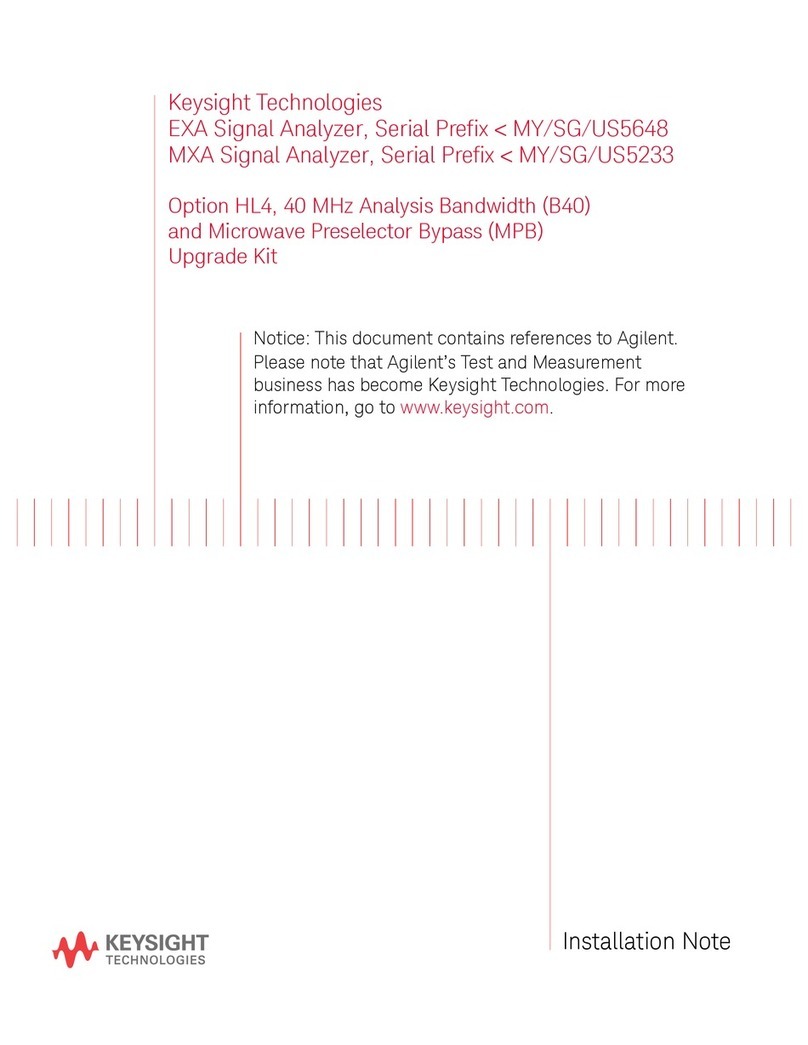
Keysight Technologies
Keysight Technologies N9020A Installation note
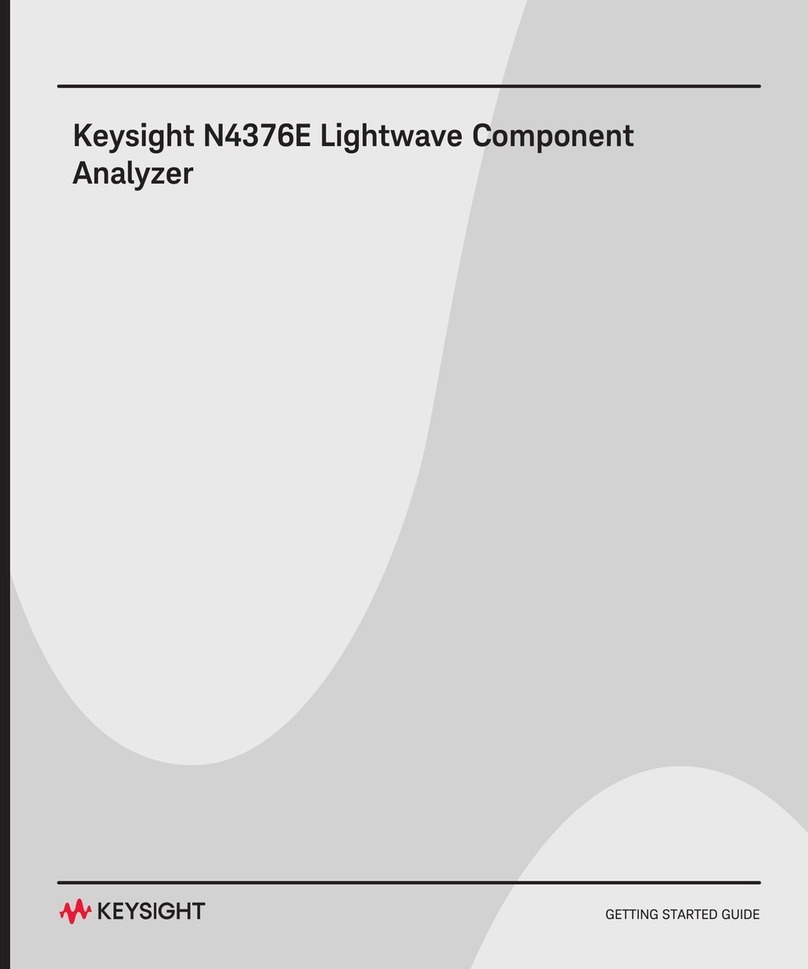
Keysight
Keysight N4376E Getting started guide
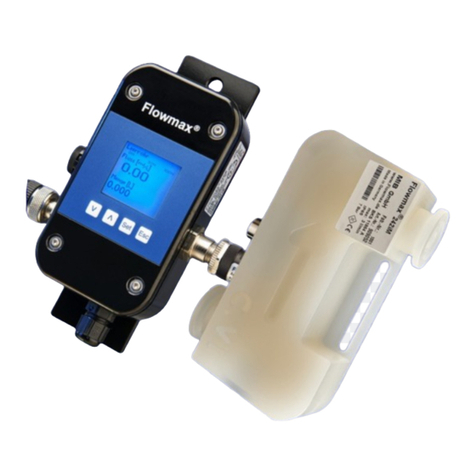
MIB
MIB Flowmax 242i operating manual

GHM-Messtechnik
GHM-Messtechnik GREISINGER GMH 3611 operating manual
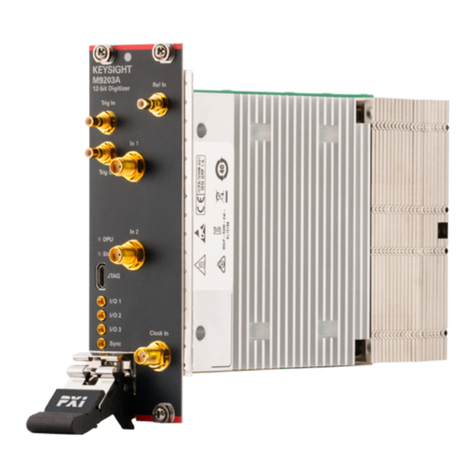
Keysight
Keysight M9203A Startup guide

Schäfer
Schäfer iQdata RMS 842+ quick start guide



